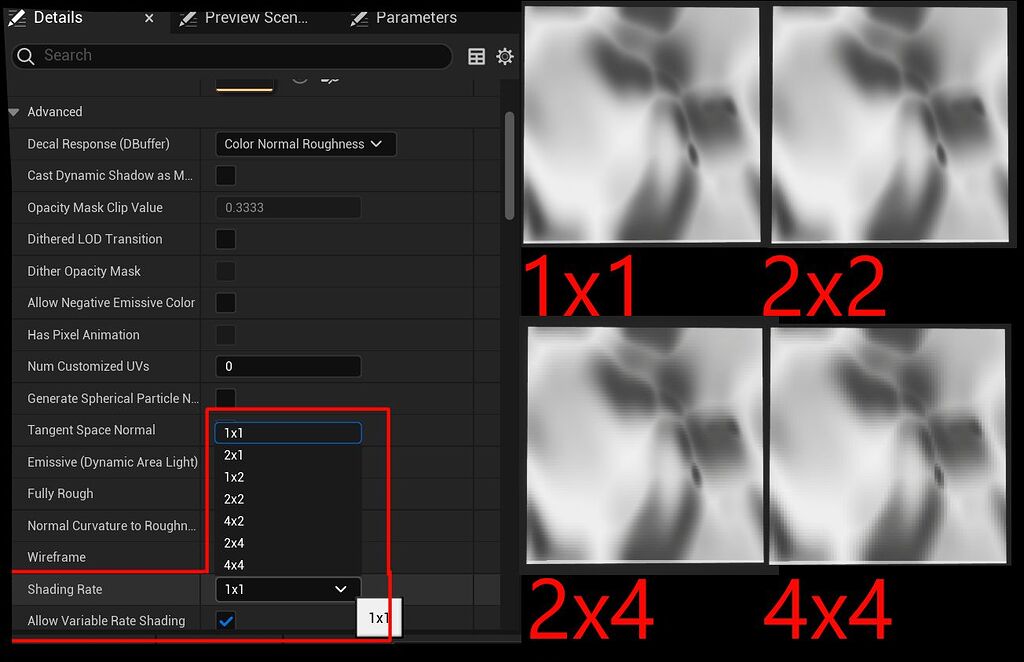VRS - The Must-Know Material Optimization Trick in UE5
UE5 lets you optimize materials using Variable Rate Shading. It runs your pixel shader once for a block, then spreads that result — reducing pixel shader cost with minimal visual loss.
This feature is not related to LOD, Nanite or Virtual Shadow Maps - it’s a separate material level optimization.
In practice, you might see 10–50% improvement on fill-rate-bound scenes, sometimes more.
Works per-material, no global setup needed.
Available since UE5.0Open your material — Details — Advanced — Shading Rate— Change
The larger the block, the less GPU load, but also more visible blur
Great to be used on background VFX, or anything that doesn’t need crisp pixel detail.
Doesn’t work with DLSS or on all platforms.
Not supported for masked materials in UE5.6. May be broken with masked materials in earlier versions.
I learned about this feature thanks to a super-duper-senior-boss-chief-king tech art wizard — Dmytro Baidachnyi. All hype to him.
Cheers
#vrs #mustknow #material #optimization #trick
VRS - The Must-Know Material Optimization Trick in UE5🤖
UE5 lets you optimize materials using Variable Rate Shading. It runs your pixel shader once for a block, then spreads that result — reducing pixel shader cost with minimal visual loss.
This feature is not related to LOD, Nanite or Virtual Shadow Maps - it’s a separate material level optimization.
In practice, you might see 10–50% improvement on fill-rate-bound scenes, sometimes more.
Works per-material, no global setup needed.
Available since UE5.0Open your material — Details — Advanced — Shading Rate— Change
The larger the block, the less GPU load, but also more visible blur
Great to be used on background VFX, or anything that doesn’t need crisp pixel detail.
Doesn’t work with DLSS or on all platforms.
Not supported for masked materials in UE5.6. May be broken with masked materials in earlier versions.
I learned about this feature thanks to a super-duper-senior-boss-chief-king tech art wizard — Dmytro Baidachnyi. All hype to him.
Cheers
#vrs #mustknow #material #optimization #trick
0 Comentários
·0 Compartilhamentos
·0 Anterior




